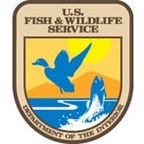Banding Ducks in North Dakota
By William Moody
Man, how the time flew by during my detail banding ducks! We were banding birds south of Devils Lake, ND. We had a slow start to patterning our target waterfowl, and the incredibly unpredictable weather definitely didn’t help. We were in rain gear, cold weather gear, and light t-shirts, all in the same day. North Dakota had a very hot and dry summer, but we must have brought all of the rain and cold with us. These sudden changes in conditions had the birds on some unpredictable schedules as well. We had to overcome the challenges in front of us and attempt to predict what birds we could band and when they would fly in. So we prepared a half dozen rocket-net sites and deployed nearly all our swim-in traps, and thankfully they were in successful feeding locations.
The first week we were there we saw large numbers of mallards and various other species of waterfowl. As we got into the second week it seemed that mallards, which was the most numerous, became second to wood ducks. Some of the swim-in traps held more than 30 wood ducks and some of the single rocket-net shoots held up to 150 in just wood ducks alone. As no surprise to our crew leader, more than 90 percent of the woodies we caught were adult males.
As we pushed forward, we had a better mix of mallard and blue-winged teal in the area. We still had all these same sites baited, and with the game cameras that set on the rocket net sites, we were able to differentiate between species and predict what our shots would produce. Also, the USGS Biologist that we worked with, Dave Brandt, knew the area very well was a huge reason we were so successful!
Even though we were limited in what types of activities we can do during the times of COVID-19, we were easily able to maintain a safe work environment that was distant from populated areas, banded ducks, and still managed to have a really enjoyable experience. I hope to have this incredible learning opportunity again in the future and look forward to applying what I have learned here to my other positions in the U.S. Fish and Wildlife Service.
